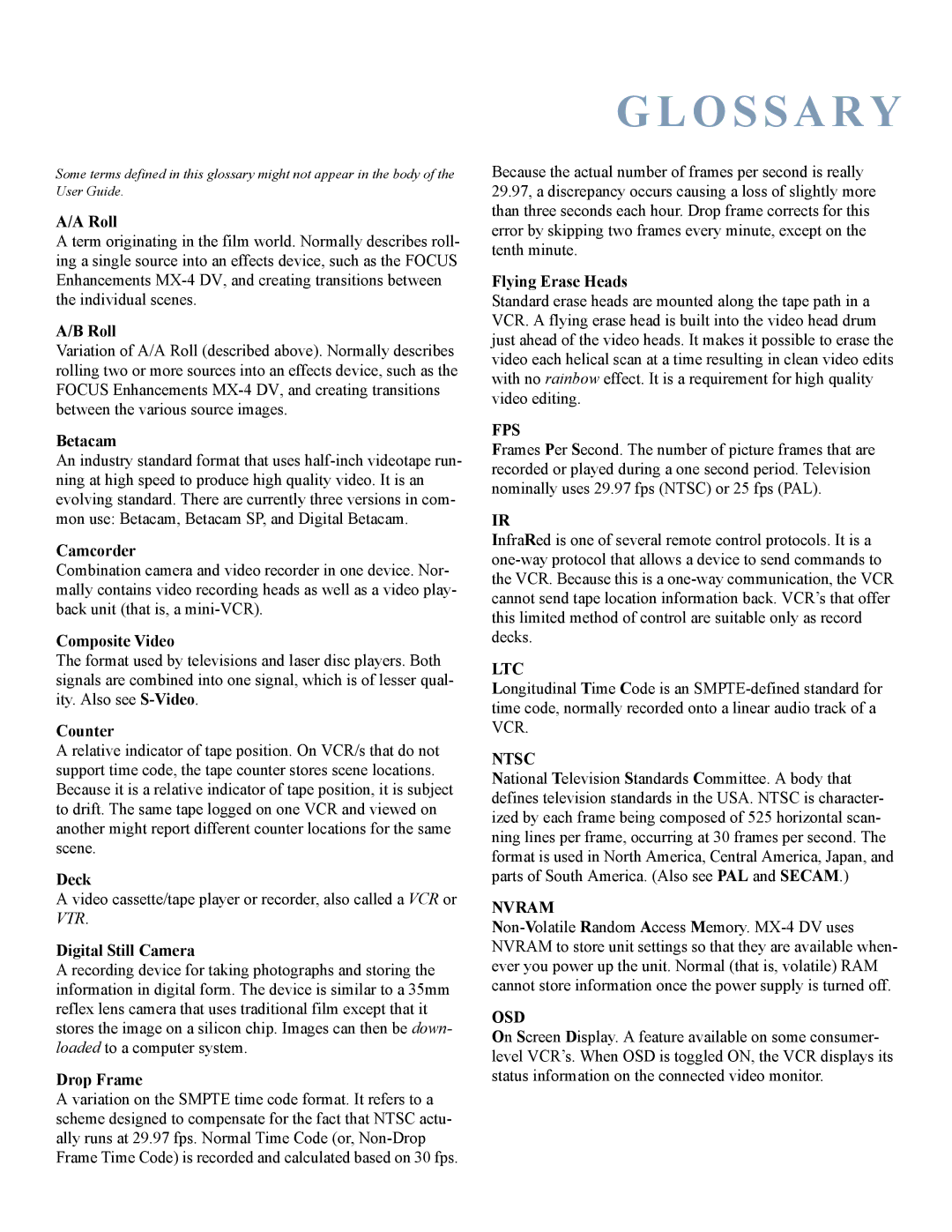Some terms defined in this glossary might not appear in the body of the User Guide.
A/A Roll
A term originating in the film world. Normally describes roll- ing a single source into an effects device, such as the FOCUS Enhancements
A/B Roll
Variation of A/A Roll (described above). Normally describes rolling two or more sources into an effects device, such as the FOCUS Enhancements
Betacam
An industry standard format that uses
Camcorder
Combination camera and video recorder in one device. Nor- mally contains video recording heads as well as a video play- back unit (that is, a
Composite Video
The format used by televisions and laser disc players. Both signals are combined into one signal, which is of lesser qual- ity. Also see
Counter
A relative indicator of tape position. On VCR/s that do not support time code, the tape counter stores scene locations. Because it is a relative indicator of tape position, it is subject to drift. The same tape logged on one VCR and viewed on another might report different counter locations for the same scene.
Deck
A video cassette/tape player or recorder, also called a VCR or VTR.
Digital Still Camera
A recording device for taking photographs and storing the information in digital form. The device is similar to a 35mm reflex lens camera that uses traditional film except that it stores the image on a silicon chip. Images can then be down- loaded to a computer system.
Drop Frame
A variation on the SMPTE time code format. It refers to a scheme designed to compensate for the fact that NTSC actu- ally runs at 29.97 fps. Normal Time Code (or,
G L O S S A R Y
Because the actual number of frames per second is really 29.97, a discrepancy occurs causing a loss of slightly more than three seconds each hour. Drop frame corrects for this error by skipping two frames every minute, except on the tenth minute.
Flying Erase Heads
Standard erase heads are mounted along the tape path in a VCR. A flying erase head is built into the video head drum just ahead of the video heads. It makes it possible to erase the video each helical scan at a time resulting in clean video edits with no rainbow effect. It is a requirement for high quality video editing.
FPS
Frames Per Second. The number of picture frames that are recorded or played during a one second period. Television nominally uses 29.97 fps (NTSC) or 25 fps (PAL).
IR
InfraRed is one of several remote control protocols. It is a
LTC
Longitudinal Time Code is an
NTSC
National Television Standards Committee. A body that defines television standards in the USA. NTSC is character- ized by each frame being composed of 525 horizontal scan- ning lines per frame, occurring at 30 frames per second. The format is used in North America, Central America, Japan, and parts of South America. (Also see PAL and SECAM.)
NVRAM
OSD
On Screen Display. A feature available on some consumer- level VCR’s. When OSD is toggled ON, the VCR displays its status information on the connected video monitor.
